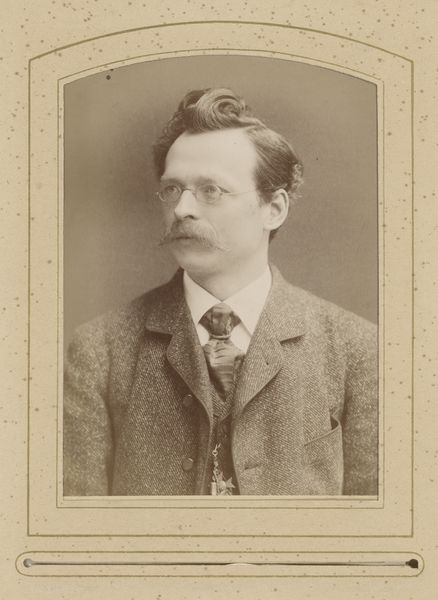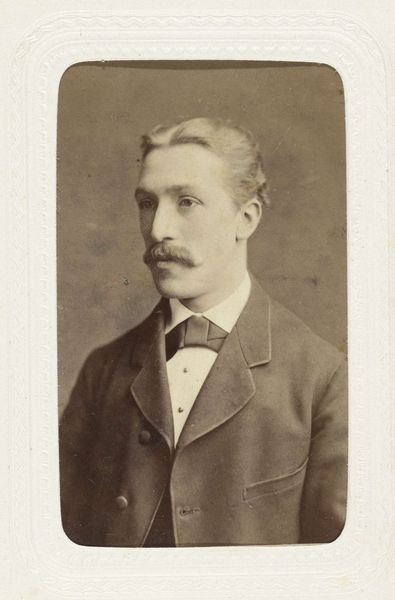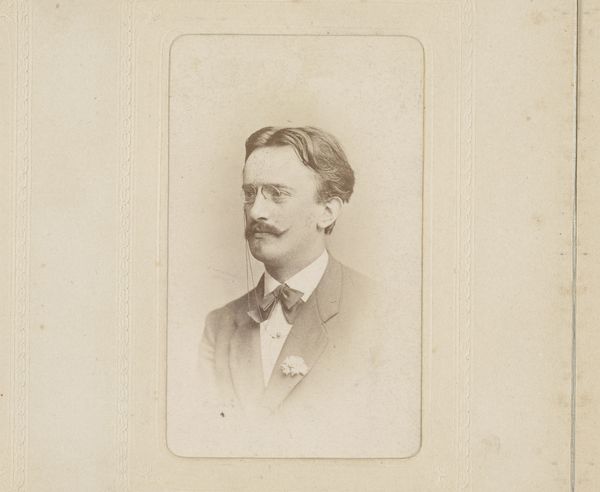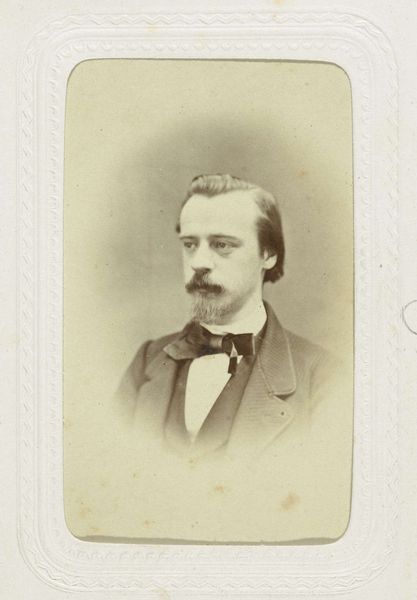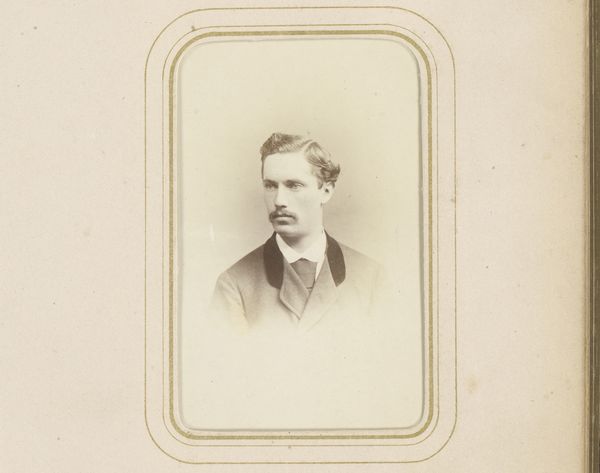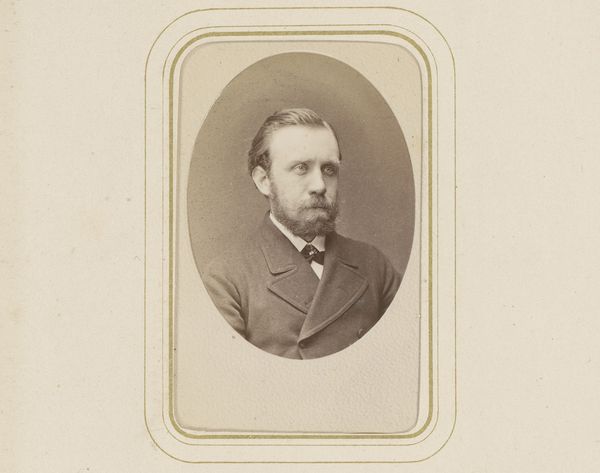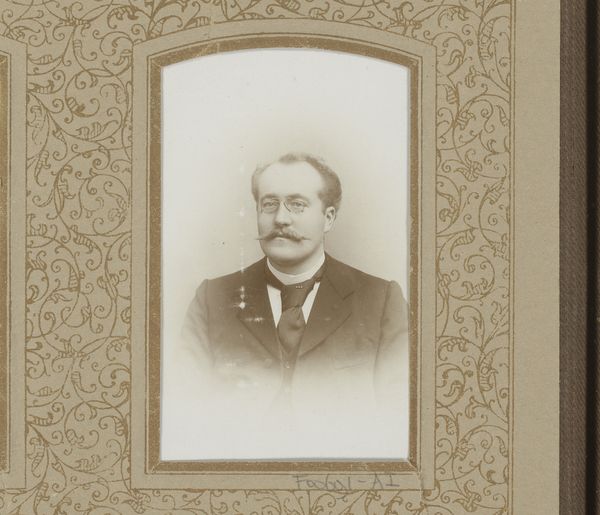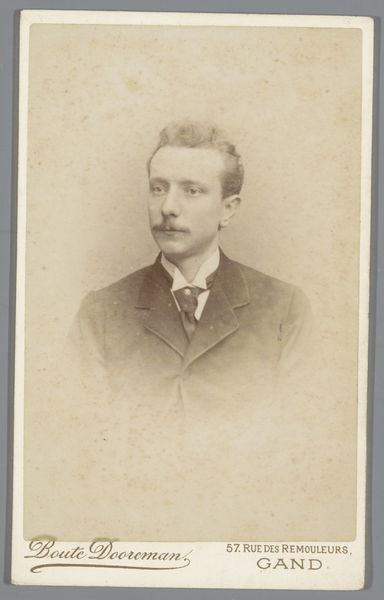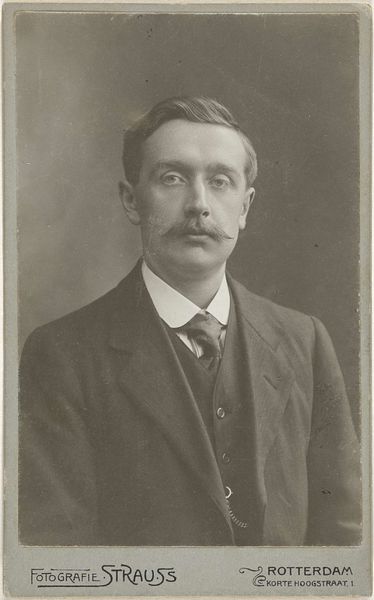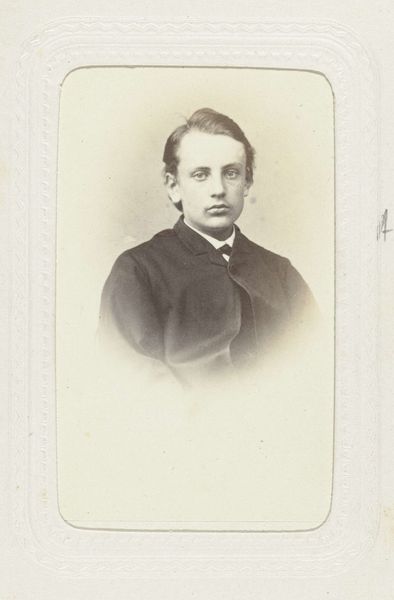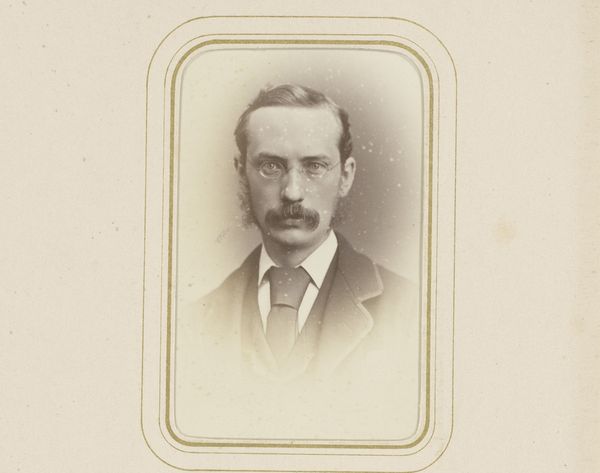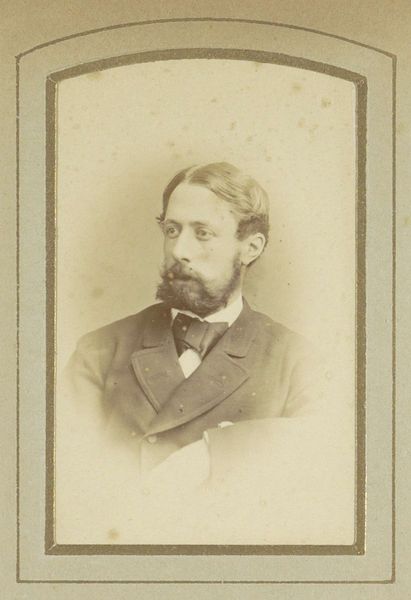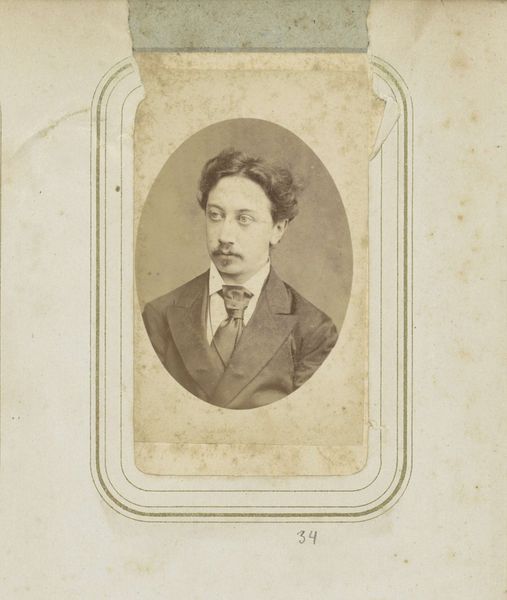
photography, gelatin-silver-print
#
portrait
#
photography
#
historical photography
#
gelatin-silver-print
#
realism
Dimensions: height 80 mm, width 54 mm, height 296 mm, width 225 mm
Copyright: Rijks Museum: Open Domain
This portrait of a man with a beard and glasses was made with a photographic process by Bernardus Bruining in the late nineteenth century. Photography, unlike painting or sculpture, is inherently tied to industrial production. The glass plate negative and the printing paper are both products of factories. The sepia tones we see here are achieved through chemical processes, manipulating light-sensitive materials to capture and fix an image. The sharpness of the details is reliant on the quality of the lens, as well as the precision of the darkroom work. What is interesting here is the scale of this photograph, as it suggests the rise of a consumer culture. Photography became increasingly accessible to the middle class as the medium developed and materials became cheaper through mass production. This portrait speaks to a growing culture of documentation and self-representation, as ordinary people gained the ability to capture and preserve their likeness. When we consider the technologies and social context in which it was made, we realize that this photograph’s cultural value as more than just a picture.
Comments
No comments
Be the first to comment and join the conversation on the ultimate creative platform.
